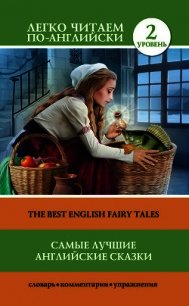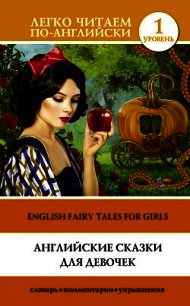More English Fairy Tales - Jacobs Joseph (читать книги полностью txt) 📗
LXII. SCRAPEFOOT
Source.—Collected by Mr. Batten from Mrs. H., who heard it from her mother over forty years ago.
Parallels.—It is clearly a variant of Southey’s Three Bears (No. xviii.).
Remarks.—This remarkable variant raises the question whether Southey did anything more than transform Scrapefoot into his naughty old woman, who in her turn has been transformed by popular tradition into the naughty girl Silver-hair. Mr. Nutt ingeniously suggests that Southey heard the story told of an old vixen, and mistook the rustic name of a female fox for the metaphorical application to women of fox-like temper. Mrs. H.’s version to my mind has all the marks of priority. It is throughout an animal tale, the touch at the end of the shaking the paws and the name Scrapefoot are too volkstumlich to have been conscious variations on Southey’s tale. In introducing the story in his Doctor, the poet laureate did not claim to do more than repeat a popular tale. I think that there can be little doubt that in Mrs. H.’s version we have now recovered this in its original form. If this is so, we may here have one more incident of the great Northern beast epic of bear and fox, on which Prof. Krohn has written an instructive monograph, Bar (Wolf.) und Fuchs (Helsingfors, 1889).
LXIII. THE PEDLAR OF SWAFFHAM
Source.—Diary of Abraham de la Pryme (Surtees Soc.) under date 10th November, 1699, but rewritten by Mr. Nutt, who has retained the few characteristic seventeenth century touches of Pryme’s dull and colourless narration. There is a somewhat fuller account in Blomefield’s History of Norfolk, vi., 211-13, from Twysden’s Reminiscences, ed. Hearne, p. 299, in this there is a double treasure; the first in an iron pot with a Latin inscription, which the pedlar, whose name is John Chapman, does not understand. Inquiring its meaning from a learned friend, he is told—
He accordingly digs deeper and finds another pot of gold.
Parallels.—Blomefield refers to Fungerus, Etymologicum Latino-Gr?cum, pp. 1110-11, where the same story is told of a peasant of Dort, in Holland, who was similarly directed to go to Kempen Bridge. Prof. E.B. Cowell, who gives the passage from Fungerus in a special paper on the subject in the Journal of Philology, vi., 189-95, points out that the same story occurs in the Masnavi of the Persian port Jalaluddin, whose floruit is 1260 A.D. Here a young spendthrift of Bagdad is warned in a dream to repair to Cairo, with the usual result of being referred back.
Remarks.—The artificial character of the incident is sufficient to prevent its having occurred in reality or to more than one inventive imagination. It must therefore have been brought to Europe from the East and adapted to local conditions at Dort and Swaffham. Prof. Cowell suggests that it was possibly adapted at the latter place to account for the effigy of the pedlar and his dog.
LXIV. THE OLD WITCH
Source.—Collected by Mrs. Gomme at Deptford.
Parallels.—I have a dim memory of hearing a similar tale in Australia in 1860. It is clearly parallel with the Grimms’ Frau Holle, where the good girl is rewarded and the bad punished in a similar way. Perrault’s Toads and Diamonds is of the same genus.
LXV. THE THREE WISHES
Source.—Steinberg’s Folk-Lore of Northamptonshire, 1851, but entirely rewritten by Mr. Nutt, who has introduced from other variants one touch at the close—viz., the readiness of the wife to allow her husband to remain disfigured.
Parallels.—Perrault’s Trois Souhaits is the same tale, and Mr. Lang has shown in his edition of Perrault (pp. xlii.-li.) how widely spread is the theme throughout the climes and the ages. I do not, however, understand him to grant that they are all derived from one source—that represented in the Indian Pantschatantra. In my ?sop, i., 140-1, I have pointed out an earlier version in Ph?drus where it occurs (as in the prose versions) as the fable of Mercury and the two Women, one of whom wishes to see her babe when it has a beard; the other, that everything she touches which she would find useful in her profession, may follow her. The babe becomes bearded, and the other woman raising her hand to wipe her eyes finds her nose following her hand—denouement on which the scene closes. M. Bedier, as usual, denies the Indian origin, Les Fabliaux, pp. 177, seq.
Remarks.—I have endeavoured to show, l.c., that the Ph?drine form is ultimately to be derived from India, and there can be little doubt that all the other variants, which are only variations on one idea, and that an absurdly incongruous one, were derived from India in the last resort. The case is strongest for drolls of this kind.
LXVI. THE BURIED MOON
Source.—Mrs. Balfour’s “Legends of the Lincolnshire Cars” in Folk-Lore, ii., somewhat abridged and the dialect removed. The story was derived from a little girl named Bratton, who declared she had heard it from her “grannie.” Mrs. Balfour thinks the girl’s own weird imagination had much to do with framing the details.
Remarks.—The tale is noteworthy as being distinctly mythical in character, and yet collected within the last ten years from one of the English peasantry. The conception of the moon as a beneficent being, the natural enemy of the bogles and other dwellers of the dark, is natural enough, but scarcely occurs, so far as I recollect, in other mythological systems. There is, at any rate, nothing analogous in the Grimms’ treatment of the moon in their Teutonic Mythology, tr. Stallybrass, pp. 701-21.
LXVII. A SON OF ADAM
Source.—From memory, by Mr. E. Sidney Hartland, as heard by him from his nurse in childhood.
Parallels.—Jacques de Vitry Exempla, ed. Prof. Crane, No. xiii., and references given in notes, p. 139. It occurs in Swift and in modern Italian folk-lore.
Remarks.—The Exempla were anecdotes, witty and otherwise, used by the monks in their sermons to season their discourse. Often they must have been derived from the folk of the period, and at first sight it might seem that we had found still extant among the folk the story that had been the original of Jacques de Vitry’s Exemplum. But the theological basis of the story shows clearly that it was originally a monkish invention and came thence among the folk.


